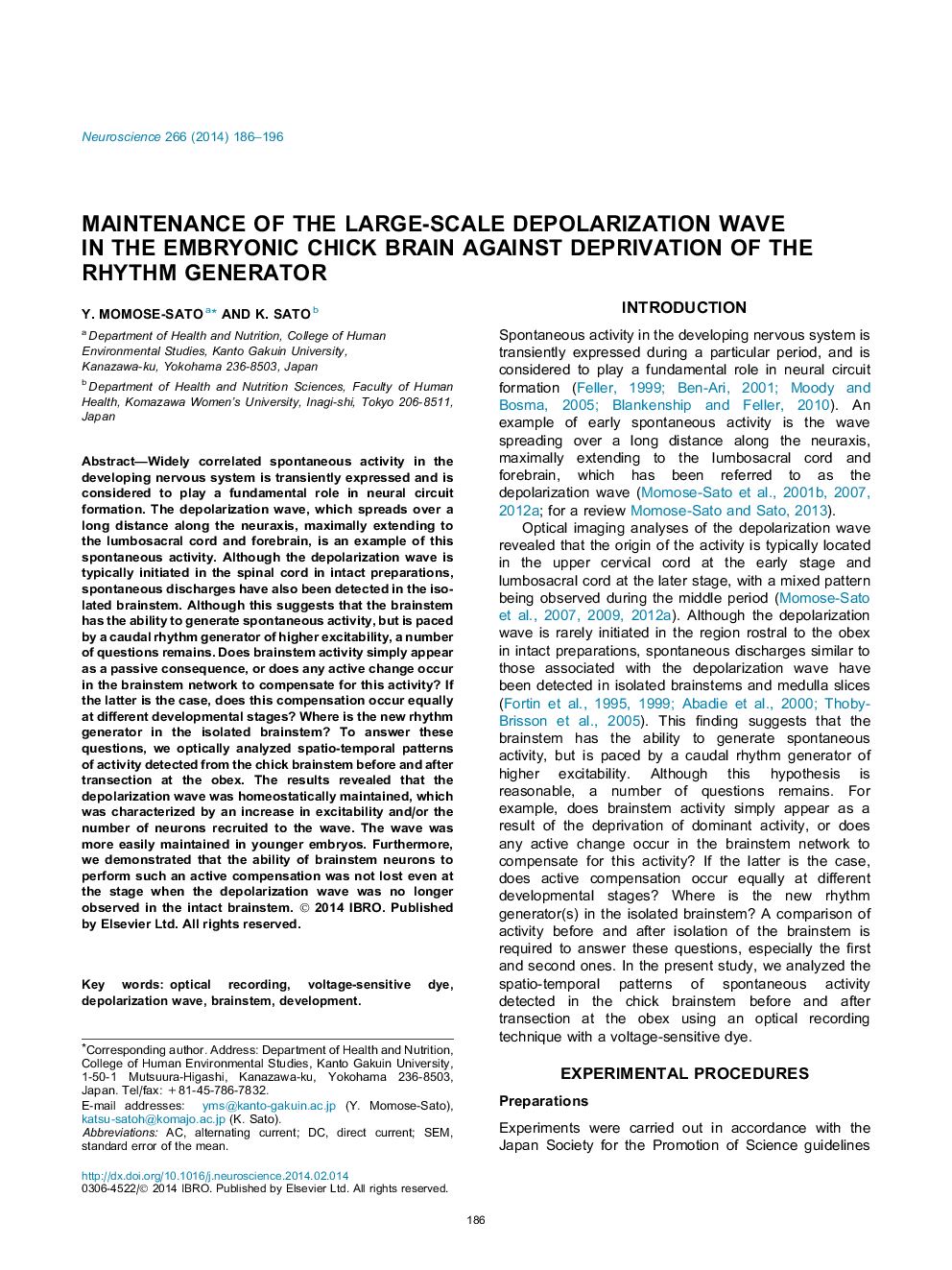| کد مقاله | کد نشریه | سال انتشار | مقاله انگلیسی | نسخه تمام متن |
|---|---|---|---|---|
| 4337696 | 1614810 | 2014 | 11 صفحه PDF | دانلود رایگان |
• The depolarization wave in the embryonic brain propagated widely along the neuraxis.
• The wave was homeostatically maintained against deprivation of the rhythm generator.
• Compensation occurred with an increase in the number and/or excitability of neurons.
• Compensation occurred more easily in younger embryos.
• Compensation occurred even at the stage in which the wave was no longer observed.
Widely correlated spontaneous activity in the developing nervous system is transiently expressed and is considered to play a fundamental role in neural circuit formation. The depolarization wave, which spreads over a long distance along the neuraxis, maximally extending to the lumbosacral cord and forebrain, is an example of this spontaneous activity. Although the depolarization wave is typically initiated in the spinal cord in intact preparations, spontaneous discharges have also been detected in the isolated brainstem. Although this suggests that the brainstem has the ability to generate spontaneous activity, but is paced by a caudal rhythm generator of higher excitability, a number of questions remains. Does brainstem activity simply appear as a passive consequence, or does any active change occur in the brainstem network to compensate for this activity? If the latter is the case, does this compensation occur equally at different developmental stages? Where is the new rhythm generator in the isolated brainstem? To answer these questions, we optically analyzed spatio-temporal patterns of activity detected from the chick brainstem before and after transection at the obex. The results revealed that the depolarization wave was homeostatically maintained, which was characterized by an increase in excitability and/or the number of neurons recruited to the wave. The wave was more easily maintained in younger embryos. Furthermore, we demonstrated that the ability of brainstem neurons to perform such an active compensation was not lost even at the stage when the depolarization wave was no longer observed in the intact brainstem.
Journal: Neuroscience - Volume 266, 25 April 2014, Pages 186–196
